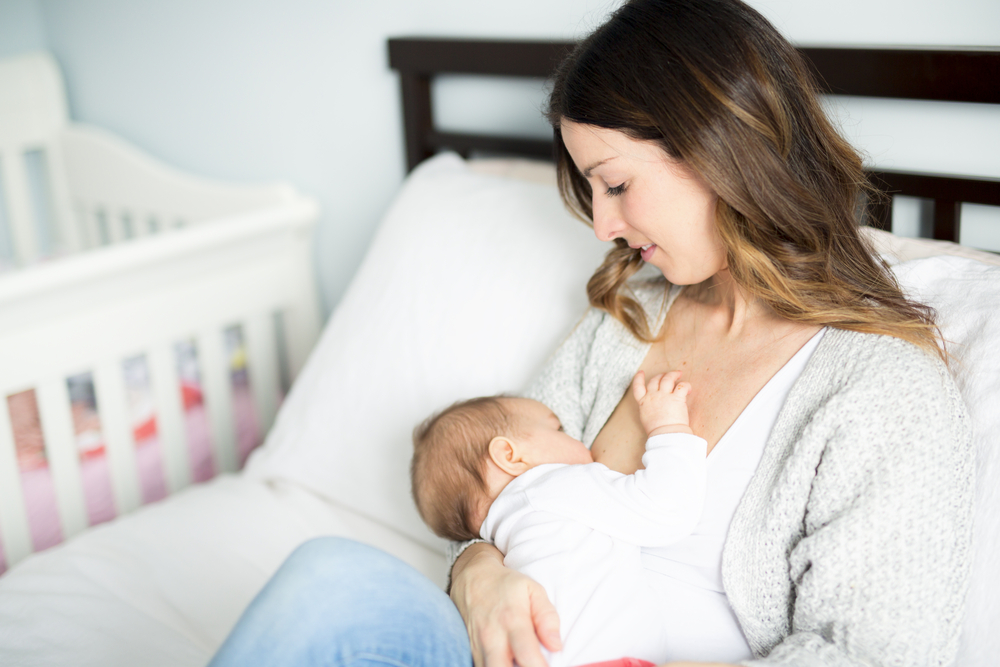Here's Why Newborns Know to Move Toward Mom's Nipple

Newborn babies can't do much, but place them on their mom's chest and they'll instinctively gravitate to the nipple, to breast-feed.
But how do newborns know to do this?
A new study from Italy suggests that one reason newborns are drawn to the nipple is because it is slightly warmer than the surrounding skin. [7 Baby Myths Debunked]
A higher nipple temperature could make it easier for a newborn to find it and could help explain the phenomenon of newborns just minutes old who somehow clamber up to the nipple, which researchers refer to as "breast crawl," according to the study, published today (July 19) in the journal Acta Paediatrica.
In the new study, the researchers wanted to test out the idea that nipple temperature indeed helped babies to find the structure. They looked at 41 women who gave birth at a hospital in January and February of 2015. Women were included in the study if they intended to breast-feed, had no problems during their pregnancy and were pregnant with just one baby.
At the hospital in Italy where the study took place, the standard practice after a woman gives birth is to immediately place the newborn on her chest and leave the baby there for 15 minutes, according to the study. During this time, a midwife helps mom get her baby to latch on.
The moms-to-be in the study were examined by the researchers about 6 hours before they gave birth and then re-examined, along with the newborns, one and two days postpartum. During each exam, the researchers measured the temperature of each woman's nipple, along with the temperature of the surrounding skin on her breast. After the babies were born, the researchers also took the temperatures of the babies' lips and forehead.
Get the world’s most fascinating discoveries delivered straight to your inbox.
The results showed that before the moms gave birth, the temperature of their nipples was slightly higher than the temperature of the surrounding skin — on average, nipple temperature was 0.2 degrees Celsius (0.4 degrees Fahrenheit) higher than the temperature of the surrounding skin. After giving birth, the women's nipple temperature rose higher than the surrounding skin, to 0.5 degrees C (0.9 degrees F) and 0.6 degrees C (1.1 degrees F) on the first and second day postpartum, respectively.
In addition to the increase in the moms' nipple temperature, the researchers also found that the babies' lips were cooler than their foreheads: On the first day, the babies' lips were, on average, 1.2 degrees C (2.2 degrees F) cooler than their foreheads, and on day two, their lips were 1 degree C (1.8 degrees F) cooler.
This means that on both the first and second day postpartum, there was an average difference of 1.7 degrees C (3 degrees F) between the mom's nipple temperature and the baby's lips, the researchers found.
That both the mom's nipple got warmer and the baby's lips got cooler suggests that some mechanism may be at work to increase the temperature difference between the two. [The Cleavage Countdown: 8 Facts About Breasts]
This difference, the researchers wrote, appears to provide a "thermal cue" to guide the baby's lips directly to the nipple.
And it's not only the nipple's temperature that's serving as a guidepost: The structure may also smell better to babies. Previous research, for example, has shown that newborns respond to the smells that are naturally released by the breasts of a lactating woman, and a warmer temperature presumably makes these smells stronger, according to the study.
The study had several limitations. For example, more research is needed to see if any medications that the moms were given during labor had an effect on nipple temperature, the researchers wrote. Nor did they collect information on certain factors that could have affected the women's milk production, such as their hormone levels and emotional states, they said.
Originally published on Live Science.




